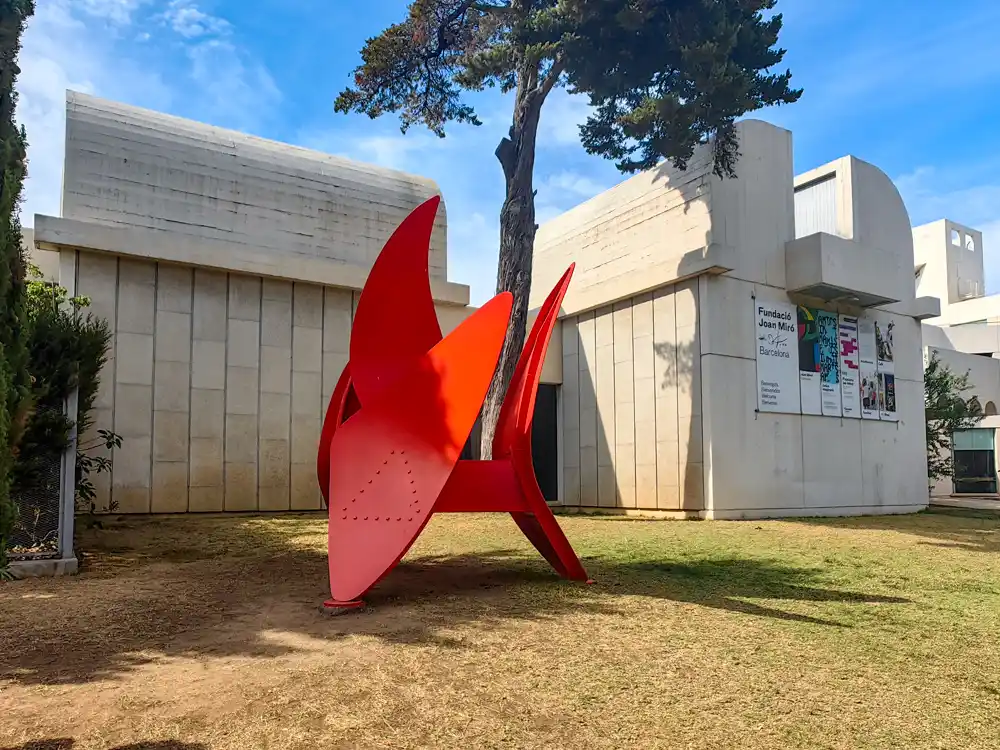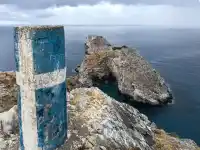Étoile Bleue: Blue Star. That’s the name of painter and sculptor Joan Miró’s most expensive work, which sold at auction in New York in 2012 for a staggering $37 million. This painting was painted in 1927 and was also why we decided to confront Miró’s work directly. An also because the most beautiful view of Barcelona is from the terrace of his gallery.
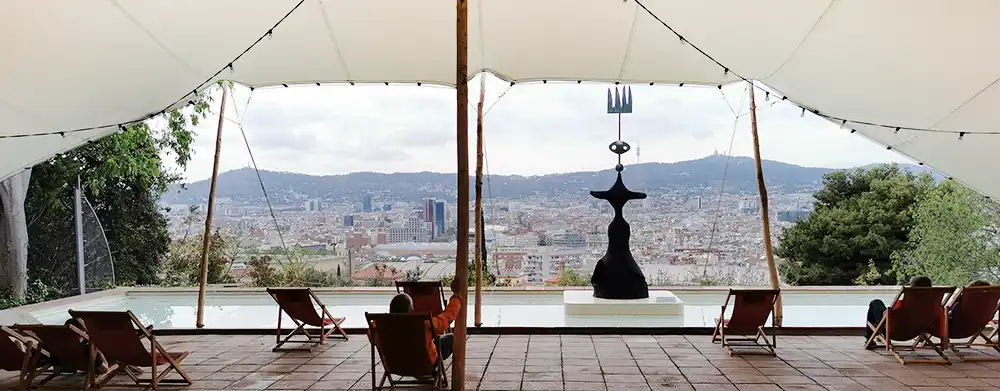
Joan Miró and Barcelona
Joan Miró was born in Barcelona in 1893 into the family of a wealthy goldsmith and watchmaker. Still, fortunately, his artistic talent overcame his watchmaking craft. He lived much of his life in Catalonia. Barcelona and Catalonia were, for him, the defining point of the universe, not only in his personal life but also in his artistic work. Joan Miró is known for his abstract and surrealist works. Many of his works were influenced by Catalan culture and his interest in primitive art and children’s drawings.
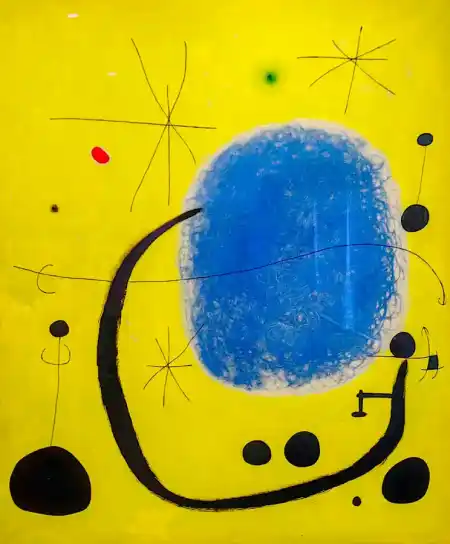
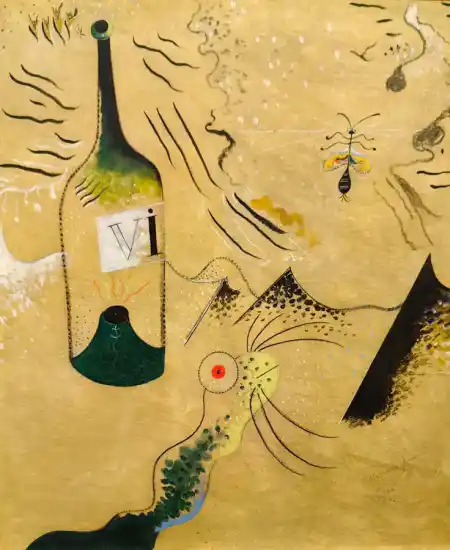


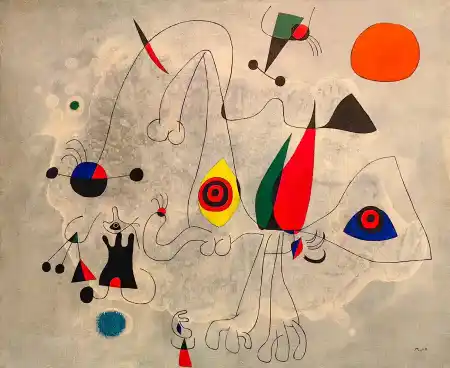
La Masia, Harlequin, Blue Holes, The Asshole and the Pubic Hair, and Composition are just some of the titles of works that make one marvel at the imagination and thinking of this man. Miró’s works have been exhibited at many major art exhibitions, including the 1936 International Surrealist Exhibition in London.
Some of the paintings seem to awaken Hieronymus Bosch in his apocalypses, often licked by Picasso, Masson, Pollock or Rothko, and the titles, that’s for sure.
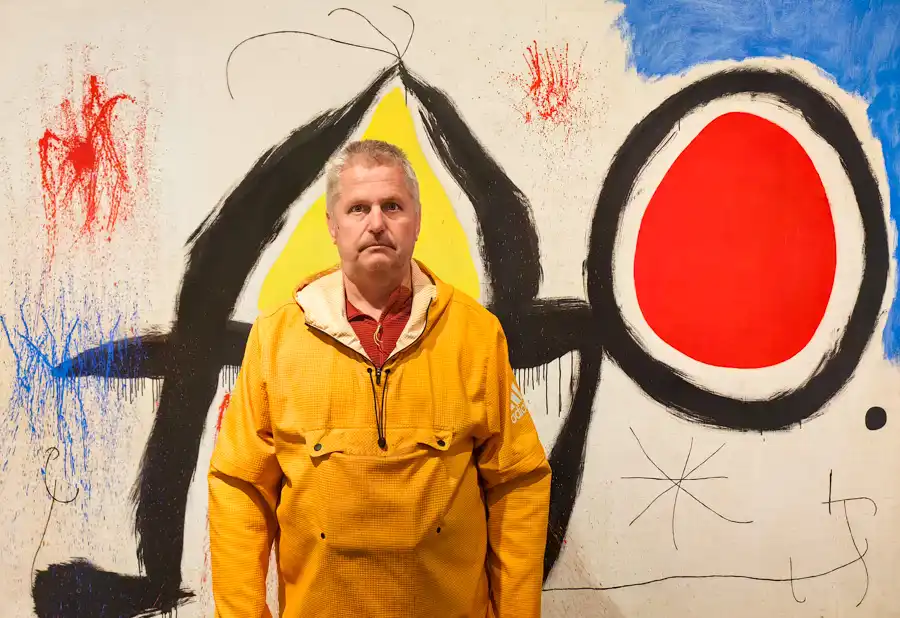
Colourful paintings with various geometric and organic forms on bold-coloured surfaces or total chaos. Miró’s childlike fantasy world goes beyond the boundaries of conventional abstract work but is full of symbols and references. A free unbound personality dominates.
Already the large-scale triptych from 1968: a painting on a white background for a solitary cell, strikes one. It was exhibited at the Tate Modern and asks more questions than it answers. There is nothing actually on the three white canvases. No paint, no forms. Just a black line on white background…
I had a similar feeling of embeddedness in Paris with Monet’s large-scale water lilies.
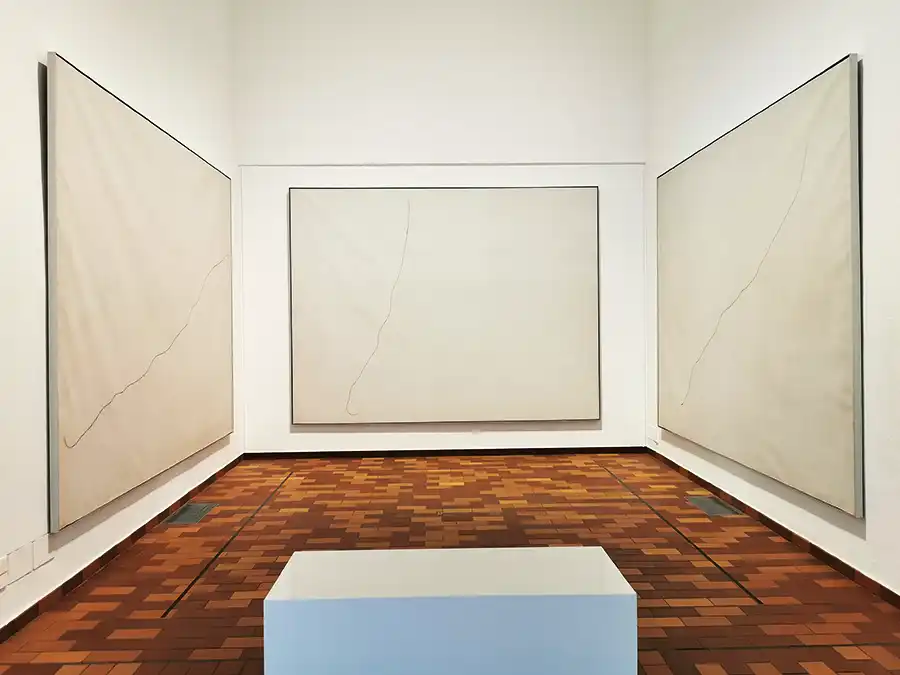
Painting on white background for the cell of a recluse
“That,…. what… is?” After the first few steps, it was clear that Jan was groping. He stares in disbelief at the titles of the paintings and the aesthetic itself. It wasn’t until this triptych that he opened his mouth earnestly for the first time. The three gigantic large-scale canvases seemed to lock the man inside. For several minutes he stared in disbelief at the line of lines pointing upwards.
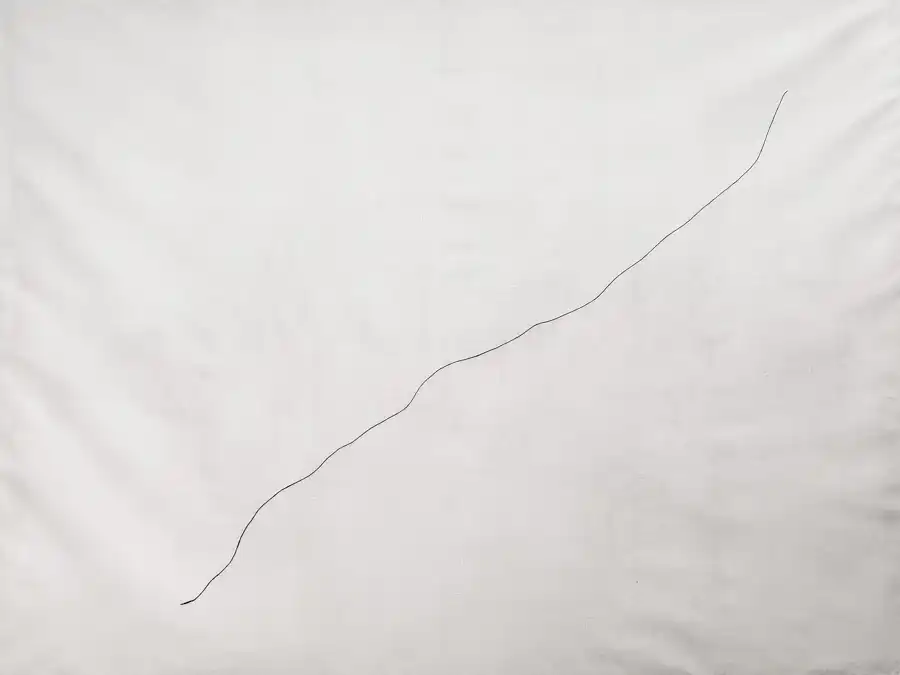
What did Miró draw? A line through space or a graph of a successful developer? One line from nowhere to nowhere into an all-consuming void. You have to get it straight in your head. Creating and selling such work for millions requires a truly liberated mind and, above all, confidence and courage. And I already knew that Jan wasn’t just going to swallow it and sit on his ass about it.
Modern Art
Miró je považovaný za jedného z najzásadnejších umeleckých predstaviteľov 20. storočia a výrazne ovplyvnil súčasné umenie. Bol veľkým vlastencom a propagoval katalánsky jazyk a kultúru.
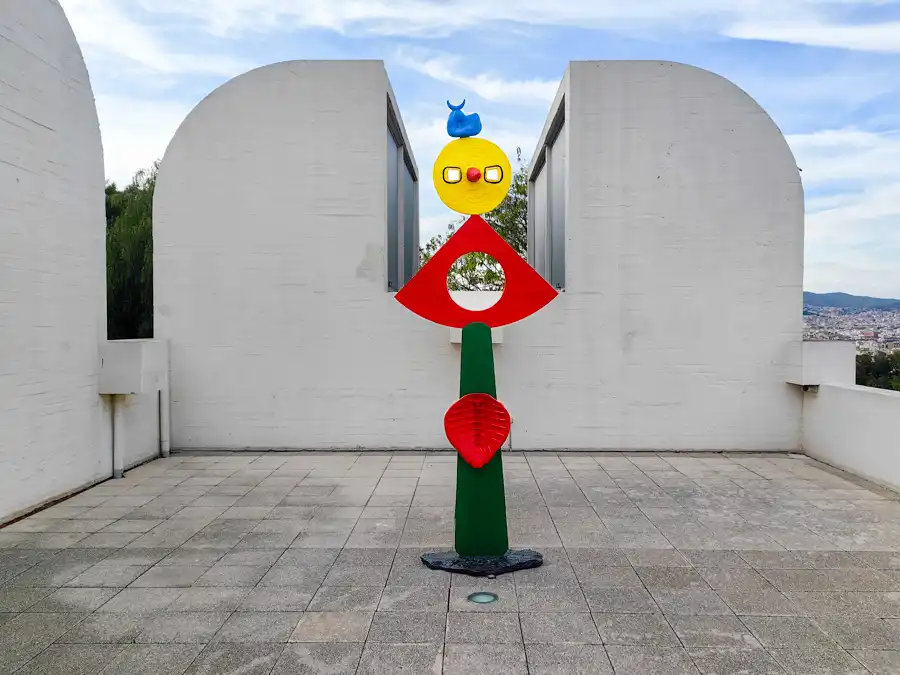
Miró was also civically very open and committed. In his later works, he began to use discarded everyday objects of the rural population as material.
I understand that an artist is someone who uses their voice to say something despite the silence of others. And doing so requires that it be something not useless, but useful to people.
Joan Miró, 2 October 1979
V roku 1975, keď bol veľmi žiadaný, otvoril v Barcelone na kopci Montjuïc vlastnú galériu v nádhernej budove Josepa Lluísa Serta, v ktorej sa nachádza mnoho jeho diel.
Jedným z nich je podobizeň španielskeho kráľa a jeho rodiny vytvorená z oje roľníckeho voza. Tento materiál mal zároveň symbolizovať Španielov. A toto dielo si vyžaduje otvorenú myseľ a možno aj trochu odvahy. 🙂
His Majesty King and the family
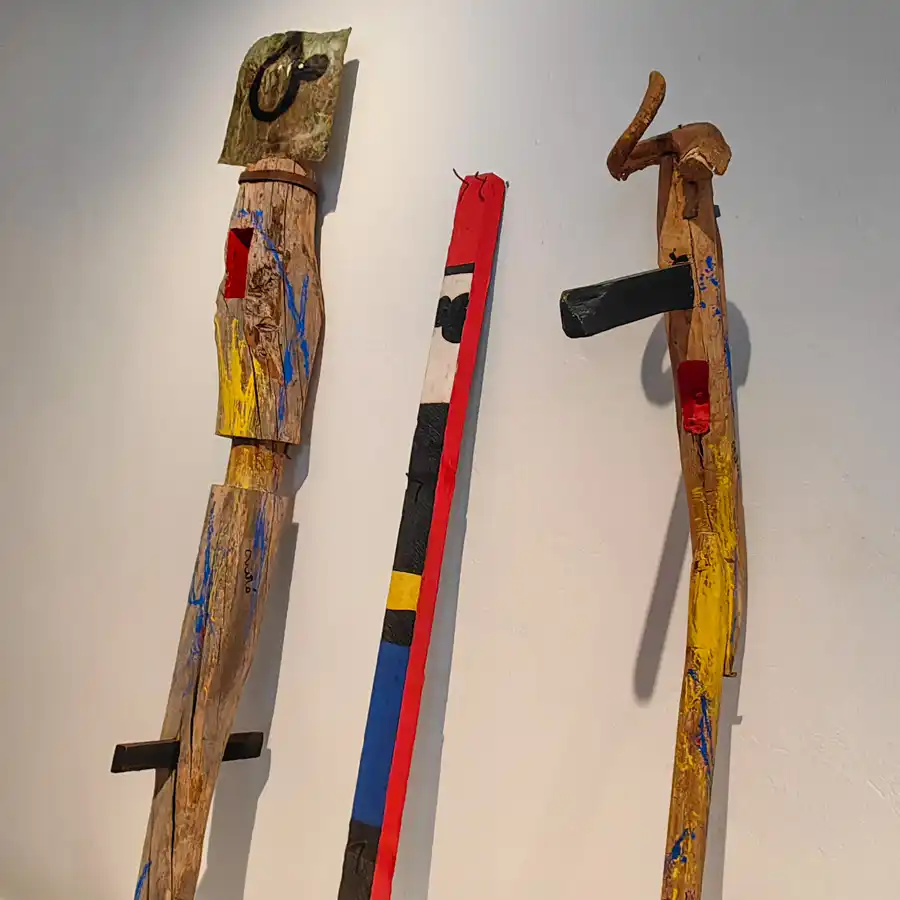
Children’s fantasy world
Adrian Searle, the Guardian critic, wrote: “Joan Miró’s work pulses with sexual energy, apparent chaos, humour, a childlike love of nature and creativity. Miró’s art is colourful and sordid, life-affirming and disgusting, musical and jerky, lyrical, ejaculatory and excremental. Everywhere you feel penises and vaginas, phalluses and pubic hair, breasts and balls, lips and eyes, tongues. The images are full of heads and stars, with dicks and targets, monsters, fish, beasts of madness, and all teeming with humour, ideas and thoughts. How beautiful and disturbing these images are; they shake the mind and the eye.”
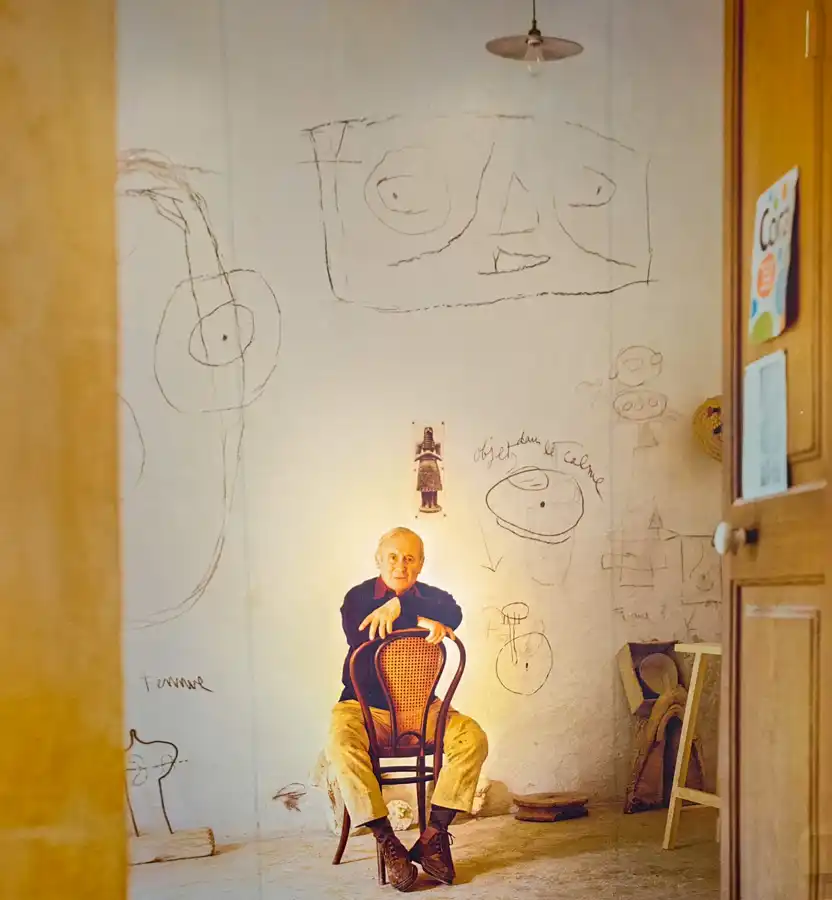
Eight umbrellas
The work Eight Umbrellas poses a big question: when is art big and monumental enough for a wealthy commissioner? It reminded me of Picasso’s periods of faceless paintings. When an impatient customer snatched an unpainted faceless painting out of his hand, he probably figured that this was good enough as art. So he stopped painting those faces altogether for a while. Why? When it’s just as good that way. Likewise here.
If the customer doesn’t think the work is gigantic enough for the money, pin the trampled-down cover sheets down, and immediately, the art is bigger. Of course, the nine umbrellas are to be noticed. But i know a few will misunderstand this as artistic hyperbole. 🙂
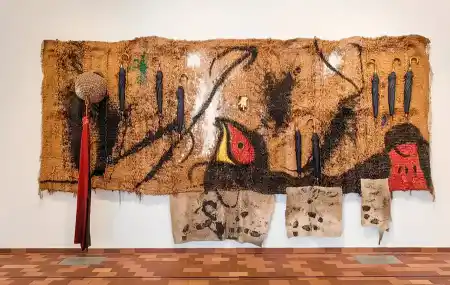

Confrontation with an open mind
Walking through the gallery, Jan and I are getting closer to knowledge. This art is not about art itself. Paintings, sculptures, colour, lines, harmony, composition are just a provocative means to open the mind of the gallery visitor. It is a gateway to other worlds. No stereotype.
It makes you think differently, see differently, perceive differently and ask yourself questions in the process: “Why not?”
We study each new work at length and in detail. The titles are hearty. Do we find it there?
View of Barcelona from Montjuïc
After two hours of absorption, we sit down on the terrace. We breathe Miró. The only barrier between us and the city is the pool and silence. The most beautiful view of Barcelona is just from the terrace of the Joan Miró Gallery. Barcelona is the Sagrada Familia, Messi, Parc Guel, Gaudí, El Tibidabo, Picasso, Montserrat, the sea, the beaches, the mountains and Miró.
We quietly enjoy ourselves until the school trip arrives. Then we prefer to run away.

Children’s fantasy
Children’s imagination has no boundaries or limits. Unless life, school and adults kill that imagination with bans, guidelines and orders. That is why Miró often refers to children and his foundation encourages creativity, especially in the little ones.
Every minute of this visit was worth it.
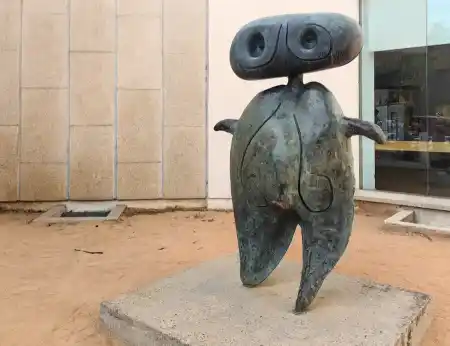
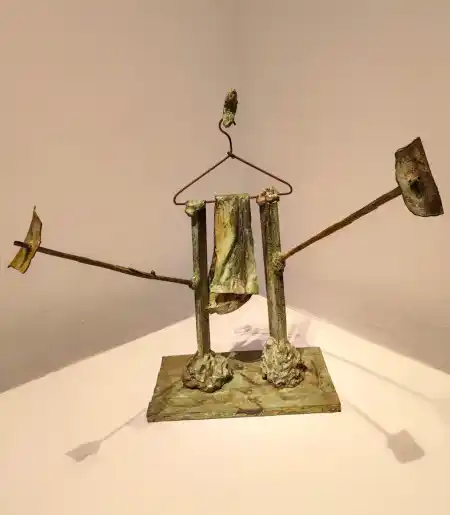


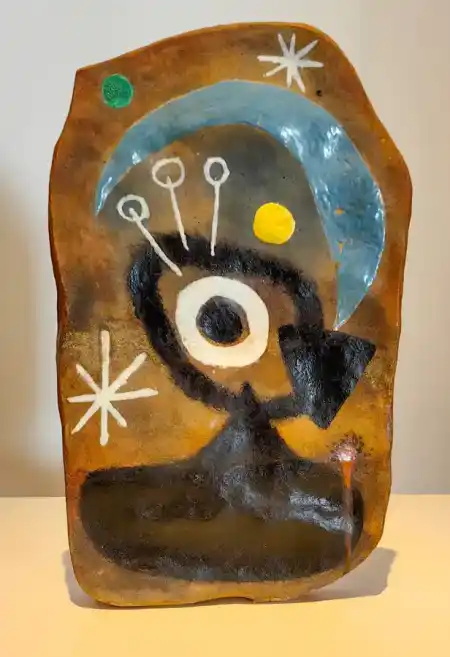
A large part of the gallery is dedicated to workshops, and the doors are always open for children. I also enjoy one of these happenings. I walk through the long room immersed up to the ceiling in orange balloons.
Well, tell me, who has experienced this? I’m slowly going through the balloons, losing my bearings in places and needing to discover the toilet as soon as possible. Quickly. Where is North? Good thing our telecom operator didn’t think of that.
Joan Miró Foundation


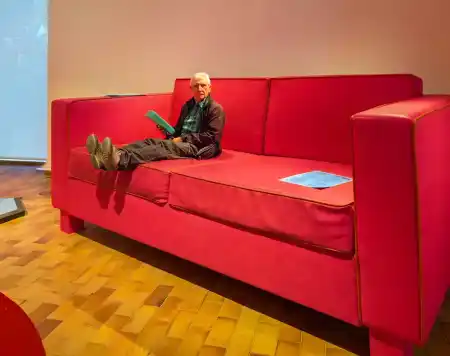
Ah, an old grandfather in balloons. So? I’m going to go full ballooning and reboot. Is it possible to suggest Sagan get on his bike and enjoy himself? Or to a mountain climber to walk up a mountain? They’re fed up after a day’s slog. Maybe they’ll restart with a good beer among friends, with a dude, a good book, a massage, a movie, a sun lounger by the sea…
Rebooting doesn’t have to mean just conquering the challenges of the 7 Hills 3 Lakes or chasing miles in the Kardionápravník. Nature and movement are healing. But so does art, a good beer and a bunch of people sometimes. Unique experiences and relationships add quality of life.
And that’s what restartnisa is all about. Enjoying life, new challenges, taking joy in every minute. A friend once told me: “You can’t live your whole life in euphoria.” I add, “Not all, but the more of it, yes.”
Living in this world is lovely, and it doesn’t take much. The most important things are relatively inexpensive. If you have a friends, goals, challenges, and impulses, and you know how to enjoy life. And that’s the kind of day Miró and I had today.
After three hours, we leave the gallery. Castell de Montjuic is still waiting for us, but we won’t stay long. If you want to get to the top, don’t walk. It’s not as close as the map makes it seem. A cable car or bus goes up from the gallery.
Castell de Montjuïc

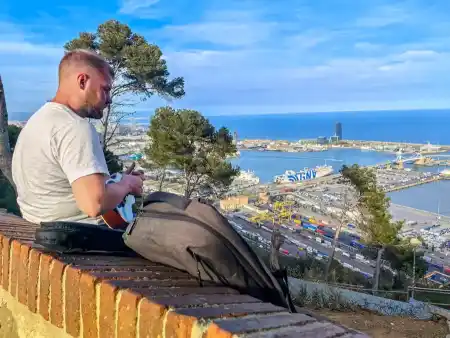

The former military fortress Castillo de Montujic was once used to protect the harbour. Today it houses a museum. We’re not going in. We are tuned differently. After Joan, everything seems somehow too realistic, too ordinary. We admire the sea, take a few selfies on the cannon and scurry off for a few tapas and a Catalan bottle of red.

